![]()
Due to the below reasons, our company suggests changing the board to be FR4 embedded with copper, namely, copper replacing AlN.
- The process is complex. Though we can make it, it is difficult to fabricate.
- The embedded ceramic (AlN) size is too big and easy to break out.
- AlN costs a lot.
If your board can be changed, here is our suggestion and capabilities for the board:
PCB technology: double-sided FR4 + embedded copper, 1.6mm finished board thickness, 2oz copper thickness, black ink for solder mask, white ink for silkscreen, 2μm ENIG for surface finish, size 99.2mm * 71.2mm (single piece delivery), quantity 10pcs. Price: $325.
A hybrid material PCB is a composite-structure PCB that uses more than one base material type for desired electrical performances, such as heat sinking, high-speed signal transmission and reception, etc.
Depending on your PCB hybrid material types, there are quite some challenges in fabricating the PCB. Rich experience is necessary for solving challenges. So if you plan a PCB project that uses different materials, early involvement from your PCB supplier is recommended. But before that, check hybrid PCB materials and PCB fabrication challenges in this article!
Part 1: Hybrid Material PCB Types
A hybrid PCB has a composite structure, with the main board embedded with inlay area(s) in different materials. Usually, the combination of materials for the hybrid PCB base can be:
- FR4/copper,
- FR4/AlN,
- FR4/alumina,
- FR4/aluminum,
- FR4/PTFE (Rogers),
- FR4/polyester (PET),
- FR4/polyimide (PI),
- Copper/AlN,
- Copper/alumina,
- PTFE/AlN,
- PTFE/alumina,
- Copper/aluminum
You can use 2different types of base materials to make your PCB, and 3or 4types are also okay! For example, we manufactured the below hybrid high-frequency PCB using 4 types of materials - Rogers RT 6202, FR4, ceramic, and copper.
![]()
Below is a copper/FR4 hybrid PCB used for air conditioning central systems.

Below is a copper/AlN hybrid PCB for stage lights. COB LEDs are flip-chip bonded on the embedded AlN area.
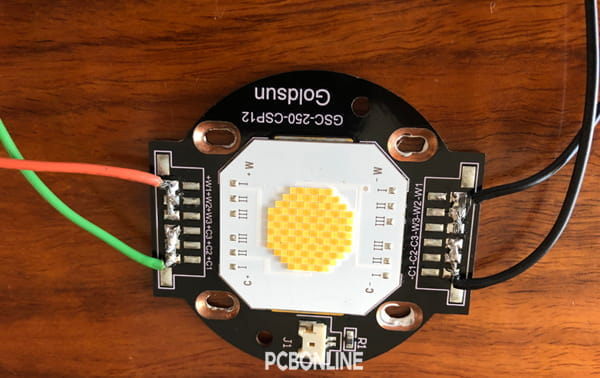
Part 2: How to Bond Different Materials in a Hybrid PCB
As we all know, ceramic, copper, FR4, PI, and PTFE are different materials and have different physical properties. How do these different materials bond together?
Different materials bond together through phase-change in the connection areas. Phase change means under high temperatures, different materials melt and cure so that they integrate.
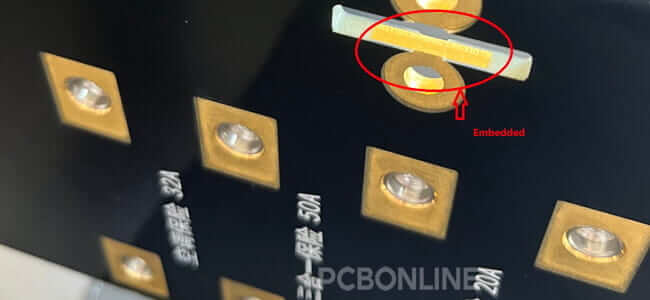
You should know that in the PCB manufacturing process, lamination is under high temperatures and pressure. During lamination, in the connection areas, prepreg (PP) and the PCB base materials phase change and integrate, such as FR4, ceramics, copper, aluminum, PTFE, and PET.
PCBs for thermal management solutions also use special PP that has more than 3W/mK of thermal conductivity to connect different PCB materials.
Part 3: What are the Challenges of Hybrid PCB?
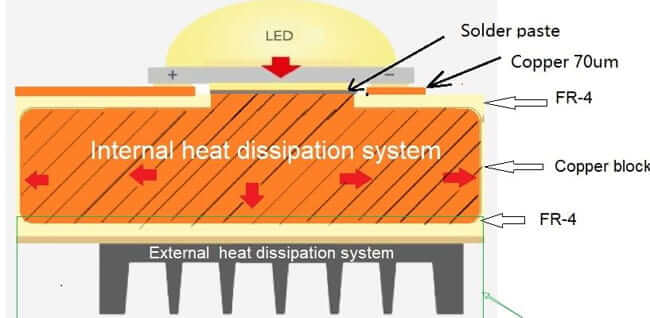
The biggest challenges to hybrid PCBs are the laminate construction(stack-up) and PP (prepreg) in the materials connection areas.
For laminate construction of hybrid PCBs, the coefficient of thermal expansion (CTE) of FR4, AlN, alumina, copper, aluminum, PTFE, PI, and PET are different. With the changes in temperatures and pressure, the sizes of the main board and inlay areas also change. You should not only consider CTE of different materials and mechanical tolerances but also have good control of the lamination specs such as temperatures. Otherwise, improper laminate construction will cause delamination and breaking boards.
Besides, keep in mind that PTFE is a soft material and has a sensitive CTE. If PTFE shrinks or expands, its RF characteristics will be affected. And if the size is too big, the ceramic material is easy to break.
Speaking of PP, it is the second challenge of hybrid PCBs. During lamination, PP of the same layer overflows to fill up the connection areas. The flow speed and amount of PP affect the integration of different materials. For thermal management solutions, you should use special PP to dissipate heat.
Rich experience is needed to solve these challenges of hybrid PCBs. We recommend early involvement from your PCB fabricator in the PCB design/project development phase.
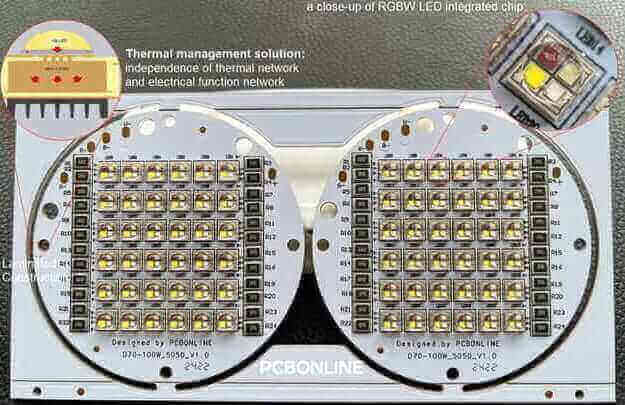
PCBONLINE, a one-stop PCB manufacturer, can provide you with reliable hybrid PCB fabrication and assembly. Founded in 1999, we have two large manufacturing bases and one PCB assembly factory. By ordering hybrid PCBs from PCBONLINE, you can enjoy these advantages from us:
- One-on-one engineering support and design assistance throughout your hybrid PCB project,
- Our CAM engineer with more than 20 years of experience can help you with hybrid PCB laminate construction and choosing PP,
- Good control of the expansion of high-frequency materials and in-stock RF material within a 45 day storage period,
- Custom hybrid PCB fabrication using 2 to 4 types of base materials, including FR4, copper, aluminum, AlN, alumina, PTFE, PI, PET, and glass,
- One-stop hybrid PCB design, fabrication, and assembly from prototypes to bulky production.
If you need hybrid flex PCBs, hybrid aluminum PCBs, ceramic hybrid PCBs, RF circuit hybrid PCBs, and so on, please feel free to contact PCBONLINE by email at info@pcbonline.com. Our CAM engineer will assist you along the way.
Part 4: FAQs about Hybrid PCB
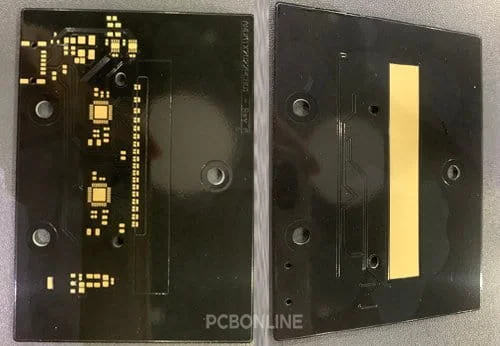
Question 1. What are the advantages of hybrid PCBs?
Hybrid PCBs provide all the metrics of the base materials, such as high thermal conductivity of ceramics, copper, and aluminum, high-speed characteristics of PTFE, the flexibility of PI and PET, transparency of clear PET and glass, good solderability of FR4, etc. Besides, the composite structure of the hybrid PCB is custom according to your application requirements.
Question 2. Will the price of hybrid materials PCB fabrication be higher than single base material PCBs?
Yes, it is likely to be, but for some high-performance materials, hybrid material PCBs can save costs, such as hybrid Rogers PCBs. It is complicated to design and fabricate hybrid PCBs, especially in choosing materials and PP, lamination, and drilling holes. In the prototyping phase, we need trial production to test different design details until the sample proves the correct design so that we can produce hybrid PCB/PCBA in batches.
Question 3. What are the applications of hybrid PCBs?
Hybrid PCBs meet the trend of high-density, small size, and miniaturization of electronics. Hybrid PCBs can find applications in almost all middle and high-end fields, such as aerospace, wireless, high-power, automotive, industrial, medical, defense, and commercial electronics. For example, in the above images, the hybrid RF PCB using 4 types of base materials is used for defense, the copper/FR4 PCB is used for the air condition central system, and the ceramic/copper PCB is used for stage lights.
Conclusion
A hybrid PCB provides you with great design possibilities and challenges. If you want hybrid material PCBs after evaluation, work with the manufacturer PCBONLINE for design and fabrication.
©This article is an original work of the PCBONLINE team. Please indicate the author PCBONLINE if you reprint. If the article is reproduced without permission or indicating the author's source, PCBONLINE reserves the right to investigate the infringement.




